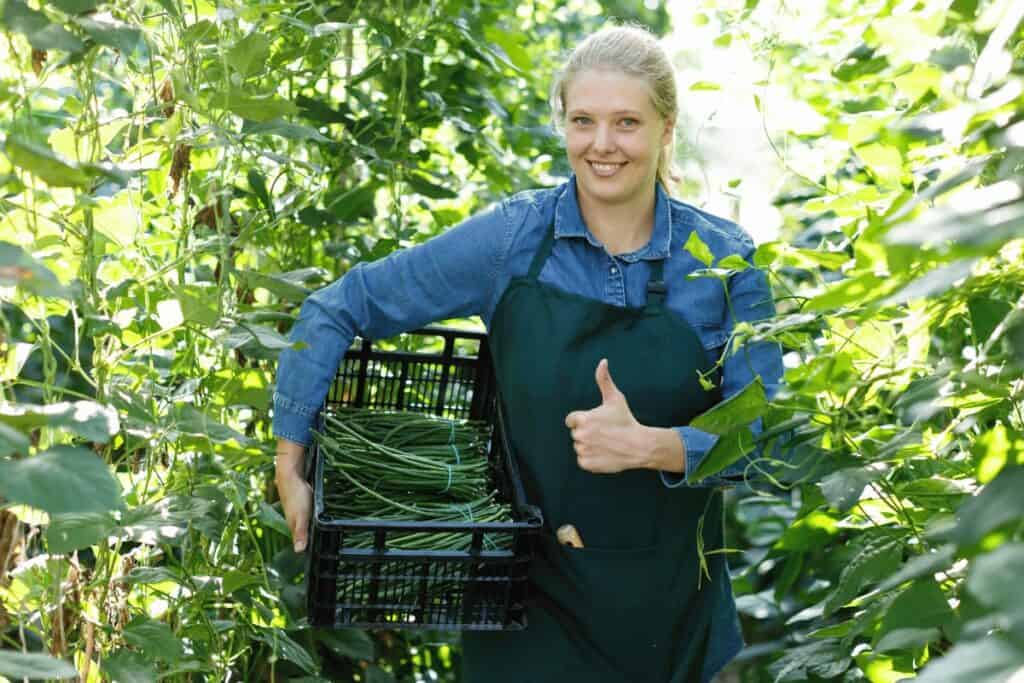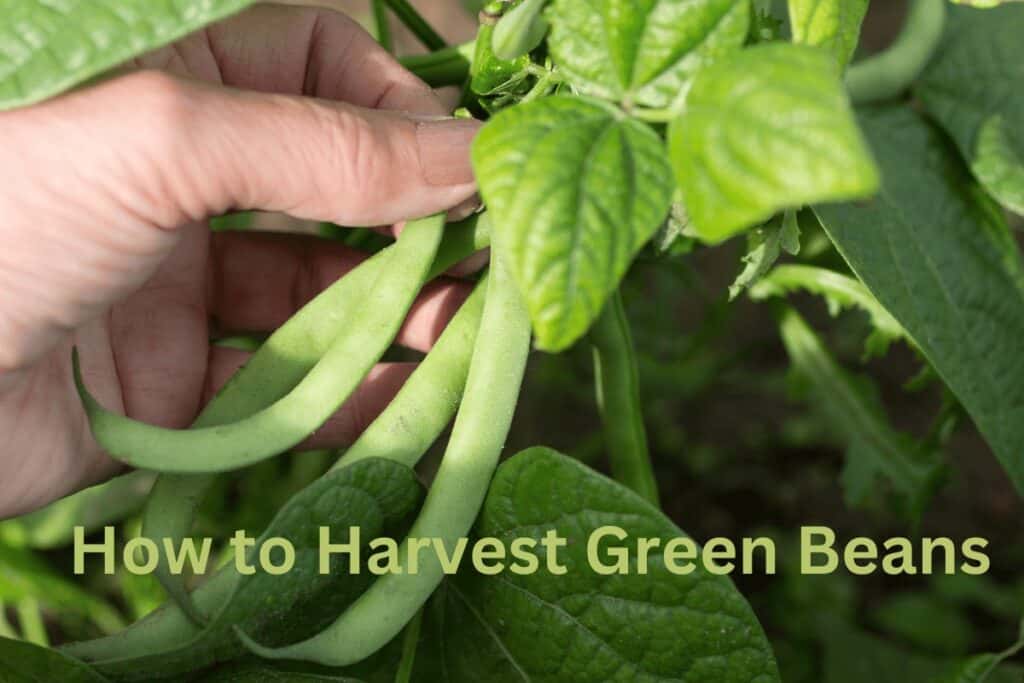Green beans are a popular garden crop that is easy to grow and maintain. Harvesting green beans at the right time are essential for a good yield and quality of produce. Knowing when to pick green beans is key to ensuring that you get the best possible results from your garden. In this article, When and How to Harvest Green Beans for Maximum Yield we will discuss the optimal time to harvest green beans for maximum yield and quality.
Factors that Affect Green Bean Harvesting

The best time for harvesting green beans depends on several factors, including the type of bean, the climate, and the maturity of the beans. Green beans come in two main types: pole beans and bush beans. Pole beans are climbers and require support, while bush beans grow in compact bushes and do not require support.
When to Harvest Pole Beans
Pole beans take longer to mature than bush beans, and they are typically ready for harvest 60-70 days after planting. Pole beans are usually harvested once the pods are plump and have reached their full size, which is about 6-8 inches long.
When the pods are firm, but not hard, and the beans inside are visible and fully formed, they are ready for harvesting. Harvesting pole beans regularly promotes the growth of new pods, which increases the yield and extends the harvest period.
When to Harvest Bush Beans
Bush beans are usually ready for harvest 50-60 days after planting, which is about two weeks earlier than pole beans. The best time to harvest bush beans is when the pods are firm, but not hard, and before the beans inside have fully developed bumps.
The ideal size for harvesting bush beans is around 4-5 inches long. Regular harvesting of bush beans promotes the growth of new pods, which extends the harvest period and increases the yield.
How to Harvest Green Beans for Maximum Yield

To harvest green beans for maximum yield, it is essential to follow these steps:
Step 1: Check the Plants for Pods
The first step is to check the green bean plants for pods that are ready for harvesting. Check the pods for size, firmness, and color. The pods should be plump, firm, and the right size, depending on the type of bean.
Step 2: Pick the Pods
Use both hands to gently pick the pods from the plant. It is important to avoid pulling the plant, as this can damage it and reduce the yield.
Step 3: Collect the Pods
Once the pods are picked, collect them in a container or basket. It is important to avoid crushing or bruising the pods, as this can damage the beans inside and reduce their quality.
Step 4: Store the Green Beans
After harvesting, it is essential to store the green beans properly to maintain their quality and freshness. Green beans can be stored in airtight containers or plastic bags in the refrigerator for up to one week. Alternatively, green beans can be blanched and frozen for long-term storage.
FAQS
When is the best time to harvest green beans?
According to [1], the best time to harvest green beans is when they are still immature, which is typically 45 to 60 days after planting, depending on the variety. Harvesting in the morning can also help seal in the beans’ sweetness.
How do I know when my green beans are ready to harvest?
As mentioned in [1], you should harvest green beans when they are still immature. Look for beans that are about the thickness of a pencil and 4-6 inches long, depending on the variety. They should snap easily when bent.
How do I pick green beans?
To pick green beans, gently grasp each bean and snap it off the plant, as described in [2]. If you have trouble snapping the beans, they may be overripe, and you should discard them.
How should I store harvested green beans?
After harvesting, the beans should be cooled in a sink of cold water and then drained before being placed in a plastic freezer bag, filled about 3/4 of the way full, as described in [1]. They can then be stored in the refrigerator for up to a week.
What can I do to maximize my green bean yield?
According to [3], planting green beans in full sun and fertile, well-drained soil with organic matter and a complete fertilizer can help maximize your yield. Planting in the fall, rather than the summer, may also improve your chances of a good harvest.
Can green beans be harvested after they turn yellow?
No, green beans should be harvested when they are green and plump. Yellow or discolored beans are overripe and may be tough or stringy.
Can I harvest green beans too early?
Yes, it is possible to harvest green beans too early. Harvesting immature beans can reduce the yield and quality of the crop.
Can I harvest green beans too late?
Yes, harvesting green beans too late can result in tough or stringy beans.
Conclusion: When and How to Harvest Green Beans for Maximum Yield
Overall, to maximize the yield of green beans, it is important to prepare the soil appropriately, start harvesting when the beans are still immature, and handle them properly after harvesting. Green bean cultivation can be a satisfying and fulfilling pursuit for any gardener.
By implementing the insights provided in this article, you can foster optimal growth and a productive yield. It’s important to note that green beans should be sown approximately one inch deep, and trellises or other supports should be provided for pole beans.
Crop rotation is also a crucial aspect of growing green beans in order to avoid soil infertility and pest issues. Timing of harvest varies depending on the variety of green beans, with bush beans being ready for harvest in around 50-55 days after planting, while pole beans can be harvested throughout the growing season.
With these helpful tips and best practices, you can grow thriving and abundant green bean plants in your garden.
Latest Posts
- What Types of Lettuces Can You Grow?

- How to Plant Onion Seeds for Maximum Germination

- How to Plant Parsnip Seeds for Maximum Germination

- How to Plant Mushroom Seeds for Maximum Germination

- How to Plant Lettuce Seeds for Maximum Germination

- How to Plant Kale Seeds: A Step-by-Step Guide to Maximum Germination Success!





